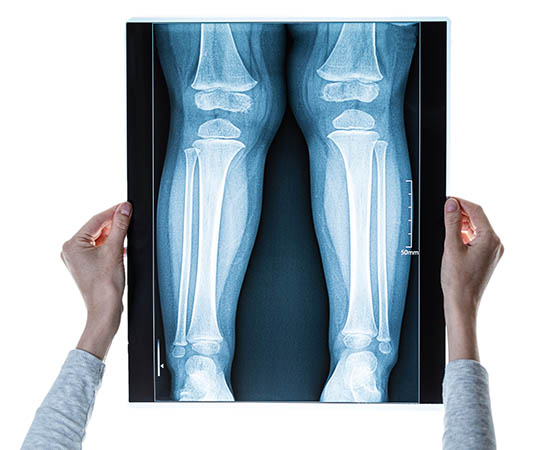From torn ligaments or cartilage to sprains, the load-bearing knee joints are prone to injuries. Experts explain the protocols employed to treat knee injuries and how to prevent them in the first place
Written By Neha Jain
With Quotes from Dr Darshan Angadi (orthopedic surgeon) and Dr Pradyumna Raghu(arthroscopy and sports medicine specialist).
The common types of knee injuries are ligament tears, meniscal injuries, fractures, bursitis, and sprains.
The knees – with the kind of load they handle during movement, or even while standing, and the physiological factors affecting the joints due to the biomechanics of the human body – are prone to strains and injuries. The common types of knee injuries are ligament tears, meniscal injuries, cartilage injuries, fractures, bursitis, and sprains. Most of it happens to be sports injuries, or those suffered during high impact physical activities, or because of a slip or a fall. The sudden bending or twisting of the knee joint can cause tears.
Occupations which keep people on their feet are particularly hard on the knees. A higher prevalence of knee injuries is seen among them, say experts.
Types of knee injuries
The knee joints comprise of both bony components and soft tissues. The bony component includes the femur (the thigh bone), tibia (shin bone) and the kneecap (patella). The soft tissue includes the muscles, ligaments, and cartilage. Injuries can happen to any of these parts.
Ligament injuries
Ligament injuries – tears to the anterior cruciate ligament injuries (ACL) and posterior cruciate ligament (PCL) – are seen among football players, kick boxers, karate fighters, martial artists, rugby, and kabaddi players. They are usually diagnosed with the help of an MRI scan. Complete ligament tears need to be treated surgically. Keyhole surgery or arthroscopic procedures have now become the standard.
“This injury is common when there is a sudden bending, twisting movement of the knee joint,” says Dr Darshan Angadi, consultant orthopaedic surgeon, HOSMAT Hospital Bengaluru. “When somebody falls off a bike or coming down the stairs, they have a significant twisting injury to the knee joint, which can injure the ACL ligament,”
Cartilage injuries
There are two types of cartilage in the knee joint – articular cartilage which acts as a layer of coat at the end of the bone, enabling smooth movement; and the shock absorbing cartilage called the meniscus.
Menisci are ‘C’ shaped structures present in the knee, which act as shock absorbers between bones in the area, and help in preventing arthritis of the knee joint.
“The menisci can undergo tears due to twisting injuries, or pivoting action at the knee joint,” says Dr Pradyumna Raghu, arthroscopy and sports medicine specialist from Bengaluru. “Once injured, patients can experience locking of the knee joint, pain in the knee joint, discomfort while climbing stairs and in severe cases inability to walk. These injuries need immediate treatment in the form of rest, icing the joint, braces and in severe cases arthroscopic repair of the menisci.”
Cartilage is a protective layer over the articulating surfaces of the knee joint.
“Cartilage injuries such as osteochondritis dissecans (OCD) and chondromalacia patella may produce severe pain in the knees especially while climbing stairs. If left untreated cartilage lesions may lead to arthritis and permanent damage,” adds Dr Raghu.
Symptoms of severe knee injuries
Any injury to the knee joints is very symptomatic. People notice it very quickly. The reason for this is that the knee is a major weight-bearing joint which facilitates all the movement done on our feet.
“Any of these kinds of structures, if they even are damaged, or injured to even minor extent people feel the pain, sometimes they may complain of some swelling, clicking sensation or reduce movement in the knee joint,” says Dr Angadi.
Treatment and prevention of knee injury
The treatment is done in phases or stages. The initial part of it focuses on managing acute symptoms.
Once the diagnosis is made, then the treatment comes in. Most of the injuries come with pain, swelling and inflammation. The treatment protocol is common in the initial stages, irrespective of the type or severity of the injury. This is to get some movement back in the knee joint.
“If somebody has come in with a lot of pain, you cannot tell them to go to exercise,” says Dr Angadi. “The first step is to control the pain. That is when anti-inflammatory medications or analgesic medications come into picture and after which the joint is supported with either a plaster or a splint or brace.”
Then comes the rehabilitation part. It is the time where some degree of normality is brought back – to the pre-injury levels of motion. That is when the role of physiotherapy, rehabilitation, strengthening conditioning, proprioception-based exercises comes into the picture.
The treatment is not just taking pills. It is a comprehensive approach. It must be done in a structured way to get back to the pre-injury levels of strength and mobility in the joints.
“Knee injuries can be prevented by strength and conditioning of the knee joint and regularly strengthening the quadriceps and the hamstrings,” says Dr Raghu. “Warm-up before playing sport or physical exertion for at least for 15 to 20 minutes and when there is a pain in the knee joint for more than three weeks immediately visit a sports medicine specialist to get yourself diagnosed.”
Along with that, intake of the required amounts of fluids, and exposure to sunlight for 15- 20 minutes each day (for vitamin D synthesis), coupled with a diet rich in calcium and essential nutrients and minerals, will help maintain joint and bone health.
Takeaways
- The common types of knee injuries are ligament tears, meniscal injuries, cartilage injuries, fractures, bursitis, and sprains.
- Timely and structured treatment of knee injuries is important. Strengthening exercise and proper warm-up before playing helps prevent knee injuries.



